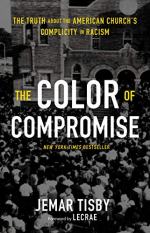|
This section contains 1,252 words (approx. 4 pages at 400 words per page) |

|
Summary
In Chapter 5, "Defending Slavery at the Onset of the Civil War," Tisby examines how the Bible was just as much a site of conflict as Civil War battlegrounds. Divides between North and South were founded in divergent views on slavery, and in disputes over whose side God was on. The Civil War "was fought over slavery and...countless devout Christians fought and died to preserve it as an institution" (71).
Tisby outlines and describes how a series of acts and events led to the Civil War. The 1850 Fugitive Slave Act enforced harsher punishments for enslaved peoples' escapes, particularly from southern to northern states. The 1854 Kansas-Nebraska Act, "shattered the uneasy truce" between slave and free states (73). The 1857 Dred Scott decision enforced blacks' lack of constitutional rights. John Brown's 1859 raid on the federal armory exacerbated divisions between slavery and abolitionist supporters. Finally, Lincoln's 1860 election gave power...
(read more from the Chapters 5 - 6 Summary)
|
This section contains 1,252 words (approx. 4 pages at 400 words per page) |

|




